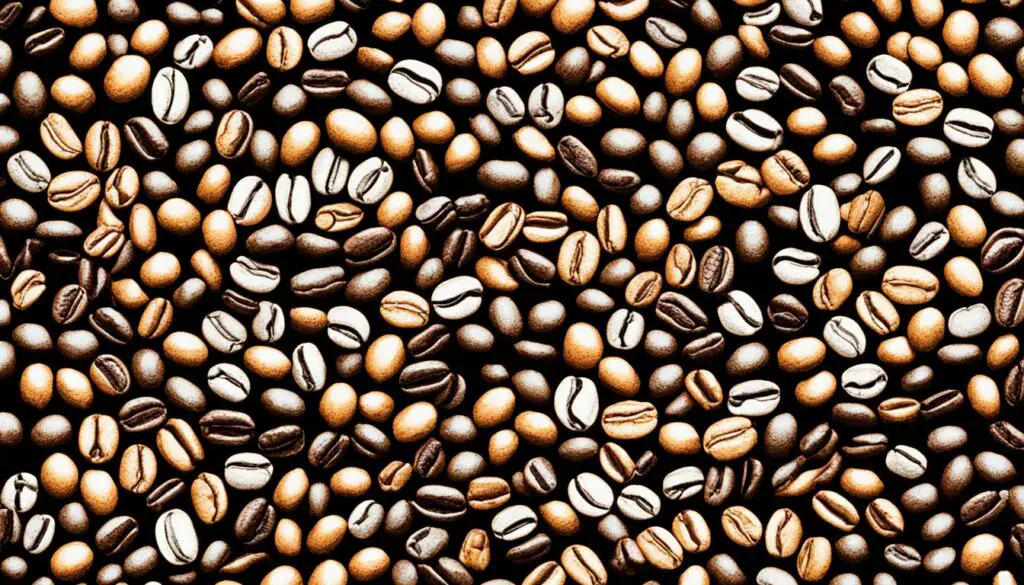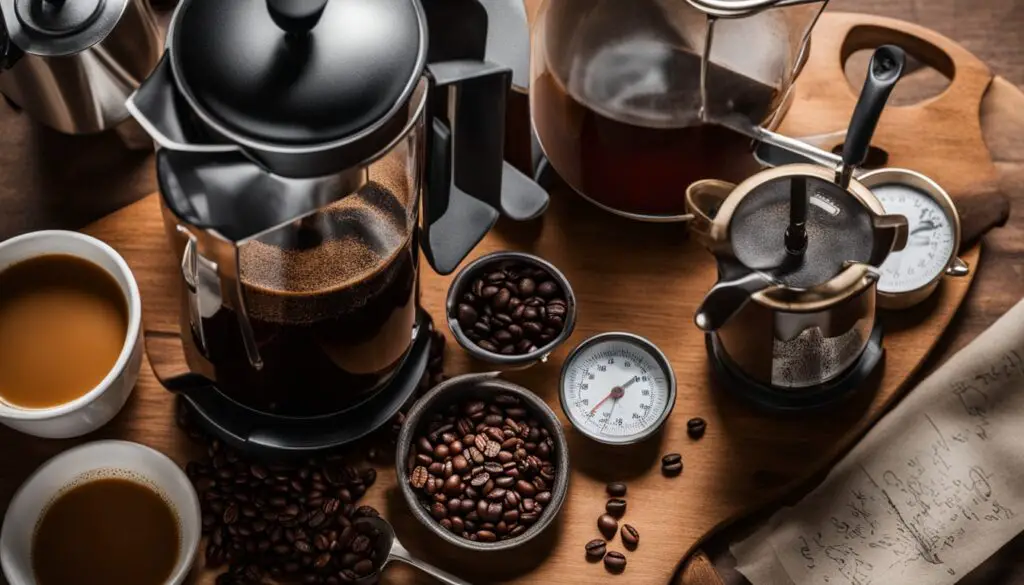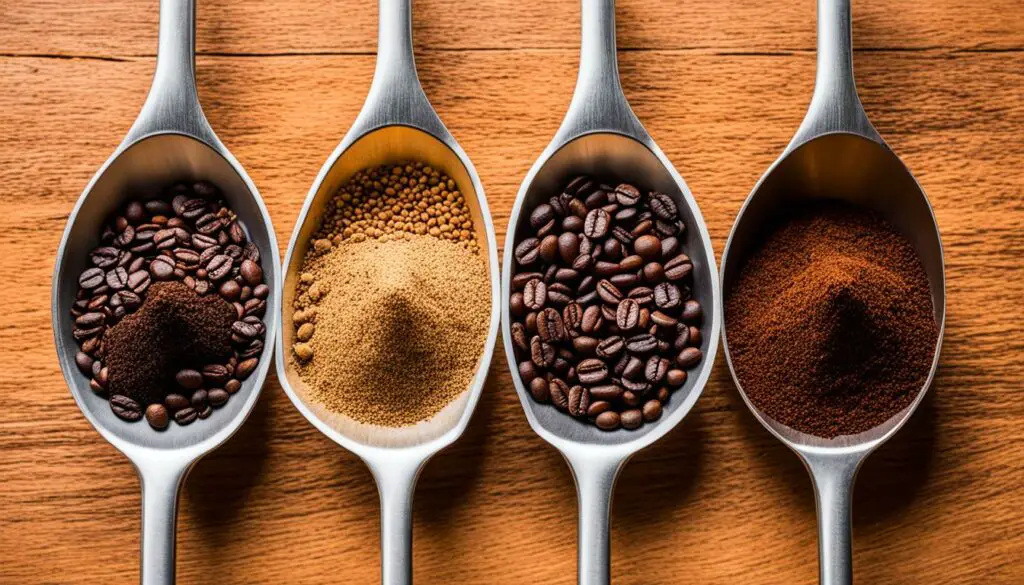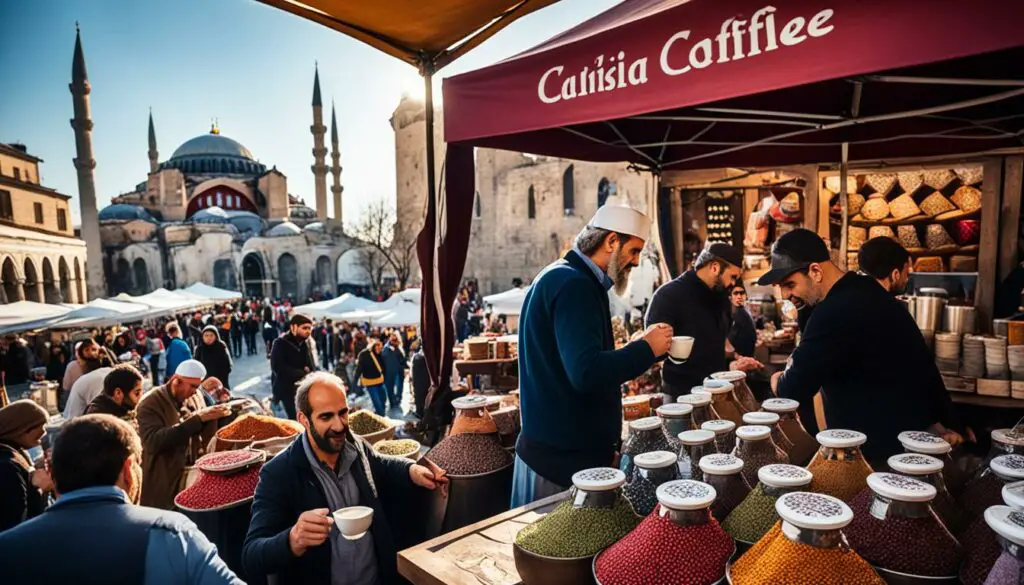Do you love the bold flavor of espresso but don’t want to invest in an expensive machine? Look no further than the Bialetti moka pot! This stovetop coffee maker has been a staple in Italian households for decades and is a simple and affordable way to brew espresso-like coffee at home. With the Bialetti moka pot, you can also make delicious cappuccino by adding frothed milk to your brewed coffee. It can make up to 6 cups of coffee at once and all you need is boiling water to get started.
The stovetop espresso maker, also known as the moka pot, was invented in the 1930s by Alfonso Bialetti and quickly became popular due to its convenience and affordability. It consists of three parts: a bottom container, a strainer assembly, and a top container where the brewed coffee collects. If you prefer a different method of brewing coffee, you may want to consider using a French press or a regular espresso machine to make your perfect cappuccino.
One advantage of using a Bialetti moka pot maker is that it produces strong, flavorful coffee without requiring high pressure like traditional espresso machines. Plus, it’s portable and easy to clean, making it a great choice for those who want to brew a few cups of coffee at home or on-the-go. The mixing container in the moka pot ensures that the coffee grounds are evenly distributed, resulting in a delicious and aromatic cup of coffee every time.
However, there are some differences between using a stovetop coffee maker, such as the Bialetti, and an espresso machine. For example, you’ll need to use low heat on your stove instead of relying on an electric heat source. It’s also important to choose the right grind size and coffee grounds for optimal results. If you’re used to using a drip coffee maker, you may need to adjust your brewing technique when using a stovetop coffee maker like the Bialetti.
Before using your Bialetti moka pot maker, be sure to read the instructions carefully and take note of safety features such as the safety valve. With proper use, you can enjoy delicious espresso-like coffee from the comfort of your own home and make up to 6 cups of coffee with this machine.
So why not give it a try? Check out pictures online or visit your local kitchenware store to get started with this classic brewing method today! You can use a stovetop coffee maker, also known as a moka pot coffee or stovetop espresso maker, to make delicious moka coffee.
What is a Moka Pot?
Overview of the parts that make up a moka pot
A Bialetti moka pot, also known as a stovetop espresso maker, is a coffee brewing machine that uses steam pressure for extraction. It consists of three main parts: the bottom chamber, the middle funnel-shaped strainer basket, and the top chamber. The bottom chamber holds water while the middle strainer basket holds ground coffee for extraction. The top chamber collects the brewed coffee.
Different sizes and materials available for moka pots
Moka pots, also known as stove top espresso makers, come in different sizes ranging from one to twelve cups. They are also made of different materials such as aluminum, stainless steel, and copper. Aluminum moka pots, like the popular Bialetti brand, are affordable and lightweight. Stainless steel moka pots are durable and easy to clean while copper moka pots are excellent heat conductors. The container of a moka pot is designed to brew a strong and flavorful coffee that is different from a drip coffee maker.
How a moka pot works to brew coffee
To brew coffee with a stovetop espresso maker like a Bialetti, fill the bottom container with water up to the safety valve level. Insert the strainer basket into the bottom container and fill it with ground coffee without tamping or pressing it down. Screw on the top container tightly and place the stovetop espresso maker on a stove over low-medium heat. As water heats up in the bottom container, steam pressure builds up forcing hot water through the ground coffee in the middle strainer basket into the top container where brewed coffee is collected.
Comparison between stovetop and electric moka pots
Stovetop moka makers require manual control of heat which can be challenging for beginners but allows for more control over extraction temperature and timing compared to electric models which have preset temperatures and timings. Electric models offer convenience since they do not require stoves but may not produce authentic espresso flavor like stovetop models. A strainer can be used to remove any grounds that may have escaped the filter. Adding sugar is a common way to enhance the flavor of the espresso.
Choosing the Right Beans and Grind for a Moka Pot:
Types of Beans Suitable for Brewing with a Moka Pot
The type of coffee beans you choose is crucial for brewing with a stovetop espresso maker. While any coffee bean can be used, some are more suitable than others for extraction. Arabica beans are known for their complex flavors and lower caffeine content, making them ideal for moka pot brewing. On the other hand, Robusta beans have a higher caffeine content and can result in a bitter taste if not brewed correctly. Once brewed, be sure to strain your coffee with a fine mesh strainer for the best results.
Importance of Choosing Freshly Roasted Beans
Freshness plays an essential role in the quality of your brew when using a stovetop espresso maker, such as a moka pot. Coffee beans that have been freshly roasted will provide you with the best flavor and aroma. To further enhance the quality of your coffee, consider using a strainer to remove any sediment or impurities. Look for coffee roasters who offer freshly roasted beans within two weeks of purchase.
Recommended Grind Size for Optimal Extraction in a Moka Pot
The right grind size is crucial to achieving optimal extraction when brewing with a moka pot maker. A fine grind is recommended as it allows water to pass through the grounds slowly, resulting in rich and flavorful espresso. The grind should be finer than that used for drip coffee but coarser than that used for espresso machines. To further enhance the quality of your brew, using a strainer can help remove any remaining particles and ensure a smooth texture.
Factors to Consider When Selecting the Right Roast Level
The roast level also plays an essential role in determining the flavor profile of your brew when using a stovetop espresso maker, also known as a moka pot. Lighter roasts tend to produce brighter flavors, while darker roasts result in bolder flavors with less acidity. It is recommended to experiment with different roast levels until you find one that suits your taste preferences.
To ensure optimal results when using your moka pot:
- Use freshly roasted coffee beans.
- Choose Arabica or blended beans over Robusta.
- Use finely ground coffee (finer than drip but coarser than espresso) with Bialetti Moka Express.
- Experiment with different roast levels until you find one that suits your taste for moka coffee brewed in a stovetop espresso maker, also known as a moka pot or espresso pot.
How to Use a Moka Pot to Brew Espresso-Like Coffee:
Preparing Your Equipment Before Brewing
Before brewing stovetop espresso with a moka pot, it is important to ensure that all your equipment is clean and dry. Make sure the bottom chamber, filter basket, and top chamber are all free of any debris or residue from previous use. Once you’ve confirmed that everything is clean, you can assemble the moka pot.
Tips on Filling Water in the Bottom Chamber
The bottom chamber of a stovetop espresso moka pot is where you fill water for brewing coffee. It should be filled just below the safety valve. Avoid filling it above this point as it can cause pressure build-up leading to an explosion or uneven extraction of coffee. Also, make sure not to overfill the water as it may mix with coffee during brewing.
Adding Ground Coffee into the Filter Basket
The next step after filling the water in the bottom chamber of your stovetop espresso pot is adding ground coffee into the filter basket. Fill it up to three-quarters full but avoid packing too tightly as it can negatively affect extraction. You can also level off the coffee using your finger or a flat object like a spoon before placing it back into the bottom chamber.
Assembling All Parts Together Before Placing on Stove Top
After filling water and adding ground coffee into their respective chambers, screwing both parts together follows suit before placing them on stovetop espresso for brewing in an espresso pot. Ensure that all parts are assembled correctly and tightly so that there will be no leaks during stovetop espresso brewing.
Using a moka pot for espresso-like coffee may seem challenging at first, but following these simple steps will help you brew delicious and aromatic cups of joe every time!
Step-by-step Guide to Brewing Espresso in a Moka Pot:
Setting up your stovetop or electric burner
To begin brewing espresso in a Moka pot, you need to set up your stovetop or electric burner. Place the burner on a flat surface and make sure it is stable. If you are using an electric burner, plug it into an outlet and turn it on.
Heating up your water until it boils
Once you have set up the stovetop espresso burner, fill the bottom chamber of the Moka pot with cold water. Make sure not to fill above the safety valve. Next, add finely ground coffee to the stovetop espresso filter basket and level it off with a spoon. Screw on the top chamber of the Moka pot securely.
Place the assembled stovetop espresso Moka pot onto heat source and turn on your stove or electric burner. Heat up your water until it boils, which should take about 5-10 minutes depending on how much water you added.
Placing your assembled Mokapot onto heat source
When you see steam coming out of the spout of your stovetop espresso Moka pot, reduce heat to low. You don’t want too much pressure building up inside as this could cause an explosion. Keep an eye on things for another few minutes while coffee begins to brew.
Monitoring progress as coffee begins to brew
As coffee begins to brew, keep monitoring its progress by watching through the clear lid at the top of your Moka pot. Once all of the coffee has been brewed and there is no more steam coming out of spout, remove from heat and serve immediately.
By following these simple steps for brewing process in a moka pot, you can enjoy delicious espresso right at home!
Tips for Making Perfect Espresso with a Moka Pot:
Avoiding Common Mistakes
When using a moka pot, there are several mistakes that can be easily avoided. One of the most common is filling the water chamber too high or too low. It’s important to fill it just below the safety valve to ensure proper pressure and extraction. Another mistake is not preheating the water before adding it to the chamber, which can lead to uneven extraction and a bitter taste.
Adjusting Variables
There are several variables that can be adjusted when using a moka pot to make espresso. Temperature is crucial – if the water is too hot, it can scorch the coffee, but if it’s not hot enough, the coffee won’t extract properly. The grind size also plays a role – too fine of a grind can cause clogging and too coarse of a grind can result in weak coffee. Finally, adjusting the amount of coffee used can affect the strength and flavor of your espresso.
Cleaning and Maintenance
Proper cleaning and maintenance are essential for keeping your moka pot functioning well and producing great-tasting espresso. After each use, rinse all parts with warm water and dry thoroughly. Over time, the mineral buildup may occur inside the pot – this can be removed by soaking in vinegar or lemon juice for 30 minutes before rinsing thoroughly.
Experimentation
Experimenting with different techniques is key to finding what works best for you when using a moka pot for espresso. Some tips include stirring gently while brewing to ensure even extraction, using cold water instead of hot to slow down extraction time, or adding spices like cinnamon or nutmeg to enhance flavor.
By following these tips for making perfect espresso with a moka pot, you’ll be able to enjoy delicious homemade espresso anytime!
Mastering the Art of Using A Moka pot For Espresso:
In conclusion, using a Moka pot for espresso can be an easy and satisfying experience once you understand the basics. Remember to choose the right beans and grind size, as well as follow the step-by-step guide to brewing espresso in a Moka pot. Make sure to use high-quality water and preheat your Moka pot before brewing.
To make perfect espresso with a Moka pot, here are some tips:
- Use freshly roasted beans
- Grind your beans just before brewing
- Fill the water reservoir with hot water
- Heat your Moka pot on low heat
- Remove from heat once coffee starts to gurgle
With these tips in mind, you’ll be able to enjoy delicious espresso-like coffee from your Moka pot.
So go ahead and give it a try! Experiment with different beans and grinds until you find what works best for you, whether you’re using a Moka pot coffee maker, moka coffee brewer, or espresso pot. And don’t forget to share your experience with others.
FAQs
1. Can I use regular coffee beans in a Moka pot?
Yes, you can use regular coffee beans in a Moka pot. However, it is recommended that you use freshly roasted coffee beans for better flavor.
2. How fine should I grind my coffee for a Moka pot?
You should grind your coffee slightly coarser than espresso but finer than drip coffee. The ideal grind size is similar to table salt.
3. How much coffee should I use in a Moka pot?
The general rule of thumb for making coffee in an espresso pot is to use one tablespoon of ground coffee per ounce of water used.
4. How long does it take to brew coffee in a Moka pot?
It usually takes around 5-10 minutes to brew coffee in a Moka pot depending on the heat level used and the amount of water used.
5. Can I use a Moka pot on an induction stove?
Yes, you can use a Moka pot on an induction stove. Just make sure to choose a Moka pot that is compatible with induction stoves.
6. How often should I clean my Moka pot?
You should clean your Moka pot after every use to prevent any coffee residue from building up and affecting the flavor of future brews.
7. Can I make more than one cup of coffee at once in a Moka pot?
Yes, you can make more than one cup of coffee at once in a larger size Moka pot. Just remember to adjust the amount of water and coffee accordingly.
8. What is the difference between espresso and coffee made in a Moka pot?
Espresso is made using high pressure and finely ground coffee, while coffee made in a Moka pot uses lower pressure and slightly coarser grind size.
9. How long does the brewed coffee last in a Moka pot?
The brewed coffee from an espresso pot should be consumed immediately for best taste and flavor.















